Comparing Periwinkle Species

Periwinkle species feature on the list of a recent job of invasive plants I’ve completed for FOR Sweden.
I’m very fond of these plants; that warm, mauve blue coupled with the glossy green leaves makes for a pretty garden plant. It was a pleasure to spend time comparing the Lesser periwinkle, Vinca minor (a problematic invasive species in Sweden) with the Greater periwinkle, Vinca major.
Another appealing aspect of the Periwinkle species is that telling these two species apart isn’t nearly as tricky as some plants can be (see Comparing Hogweed Heracleum species, and Comparing Goldenrod species for a taste of what I mean!)
Size
Lesser periwinkle is, as the name suggests, smaller than Greater periwinkle. Although both have a spreading growth pattern, and put out vegetative stems, all aspects of the Lesser are a little smaller than that of Greater. In both cases, these trailing stems help the plant colonise new areas, and can form pretty thick ground cover in ideal conditions. This isn’t surprising, the trailing stems can be up to a meter long!
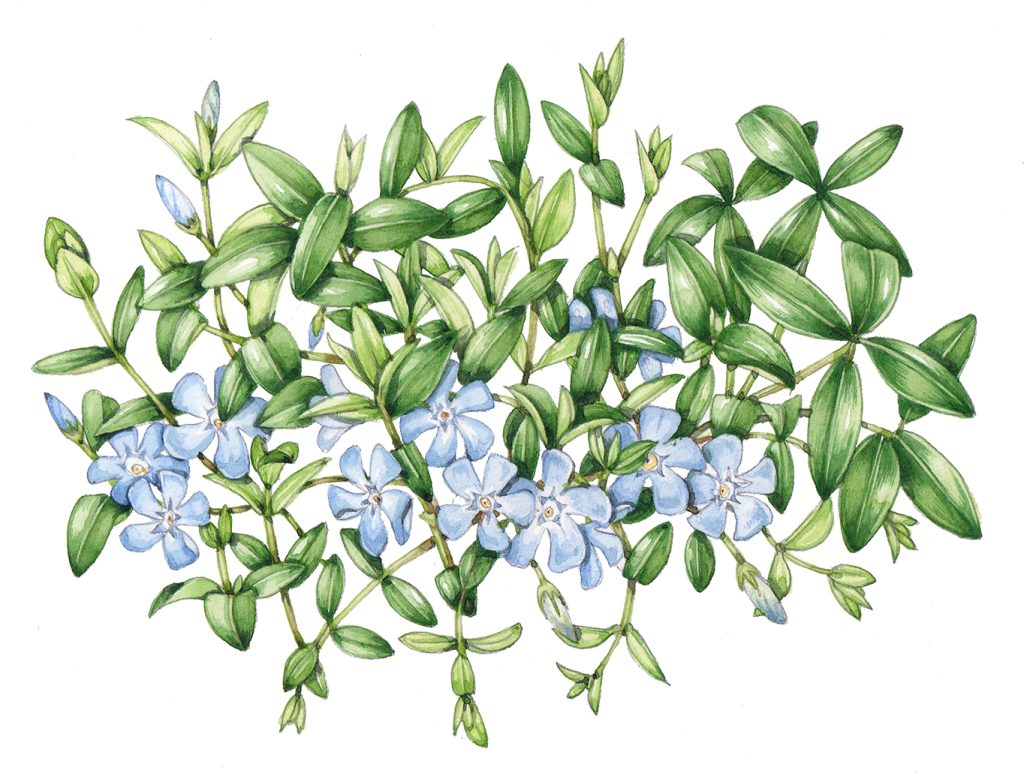
Lesser periwinkle, V. minor
Lesser periwinkle has one, (rarely two) flowers at each axil. Greater periwinkle has up to 4.
Leaves
Lesser periwinkle leaves are around 4cm long, whilst those of the Greater periwinkle are almost twice the length, averaging 6cm length. There’s a clear difference in leaf shape too. Lesser periwinkle has elliptical leaves with a pointed tip.
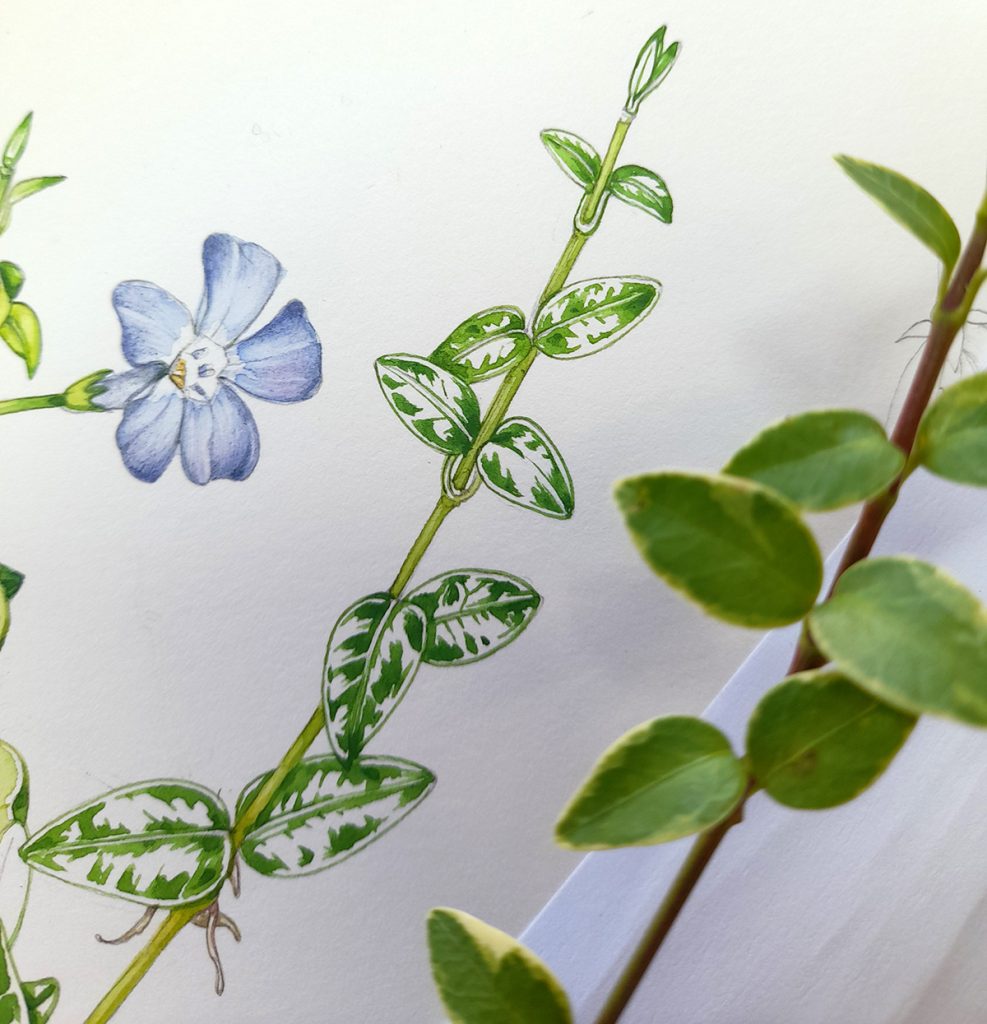
Working on illustrating leaves of V. minor
Greater periwinkle leaves are heart-shaped (or cordate; for more on terminology of leaf shape check out my earlier blog).
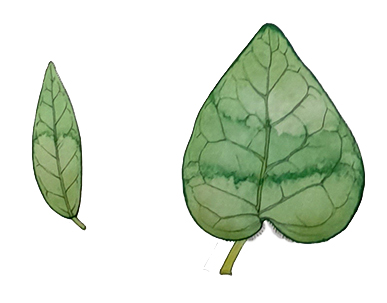
Lesser vs Greater periwinkle leaves
The petiole, or leaf stalk is noticeably longer in Greater, up to 20mm. Lesser periwinkle leaves lie far closer to the main stem, with petioles no longer than 3mm.
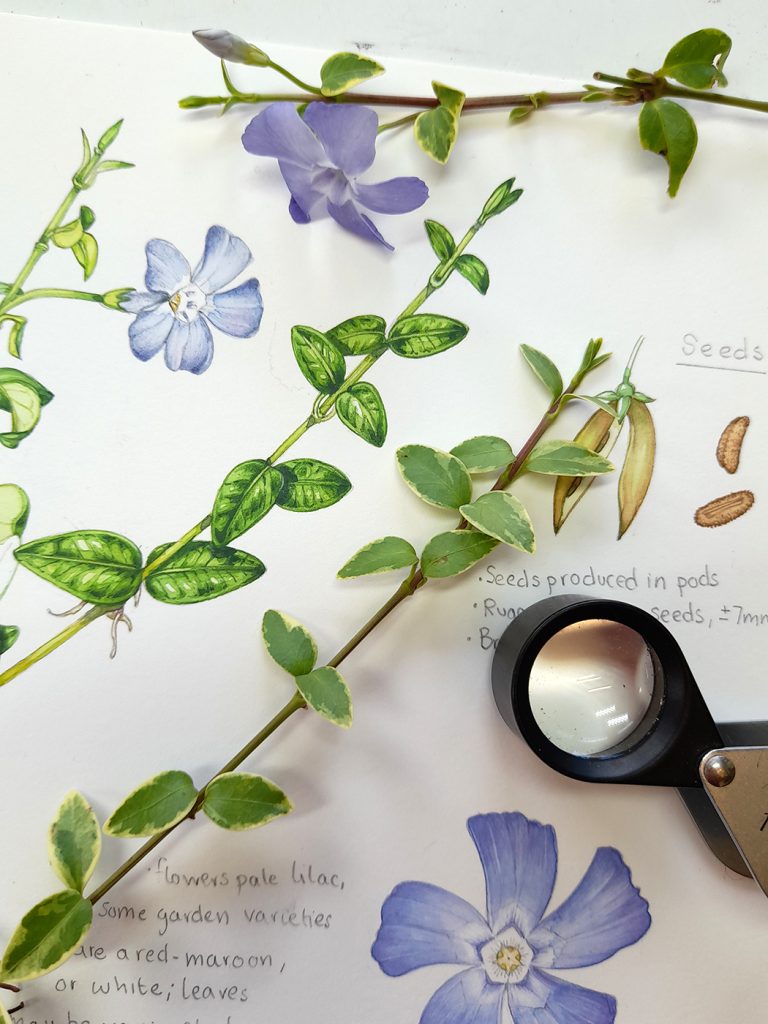
V. minor plant and illustration showing small leaves and short petioles
Finally, the leaves of the Greater periwinkle have tiny hairs at their base. These are absent in the Lesser periwinkle. I did spot these hairs, but it took some doing, and was an instant diagnostic.
I did have the challenge of only having a variegated species of Vinca minor to work with, disregarding the paler blotches can be quite tricky.
Stems
The stems of both plants look similar, being hairless and green, or flushed crimson. However, Lesser periwinkle stems can root along their length, while Greater periwinkle tend only to root at the stem tips.
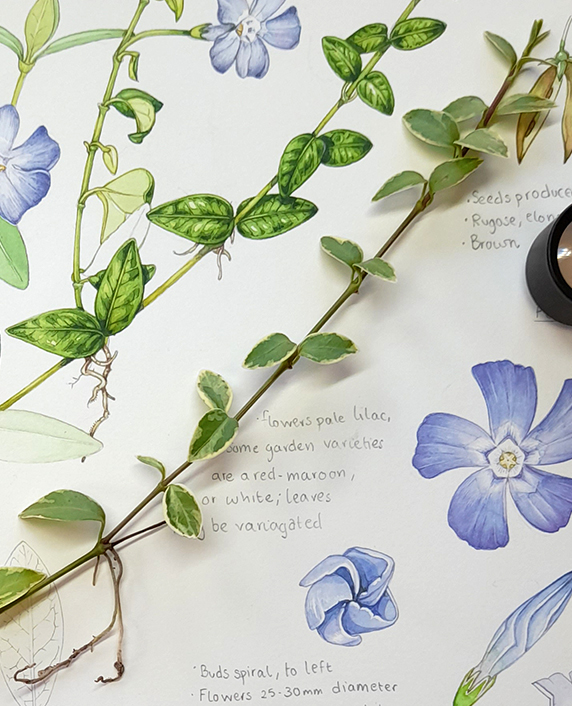
Lesser periwinkle showing roots along stem length (not only at tip)
Flowers
Lesser periwinkle flowers are smaller than those of its cousin. They average 2.5cm across, whereas those of Greater periwinkle are around 5cm wide. Both periwinkle species have five slightly unequal petals.
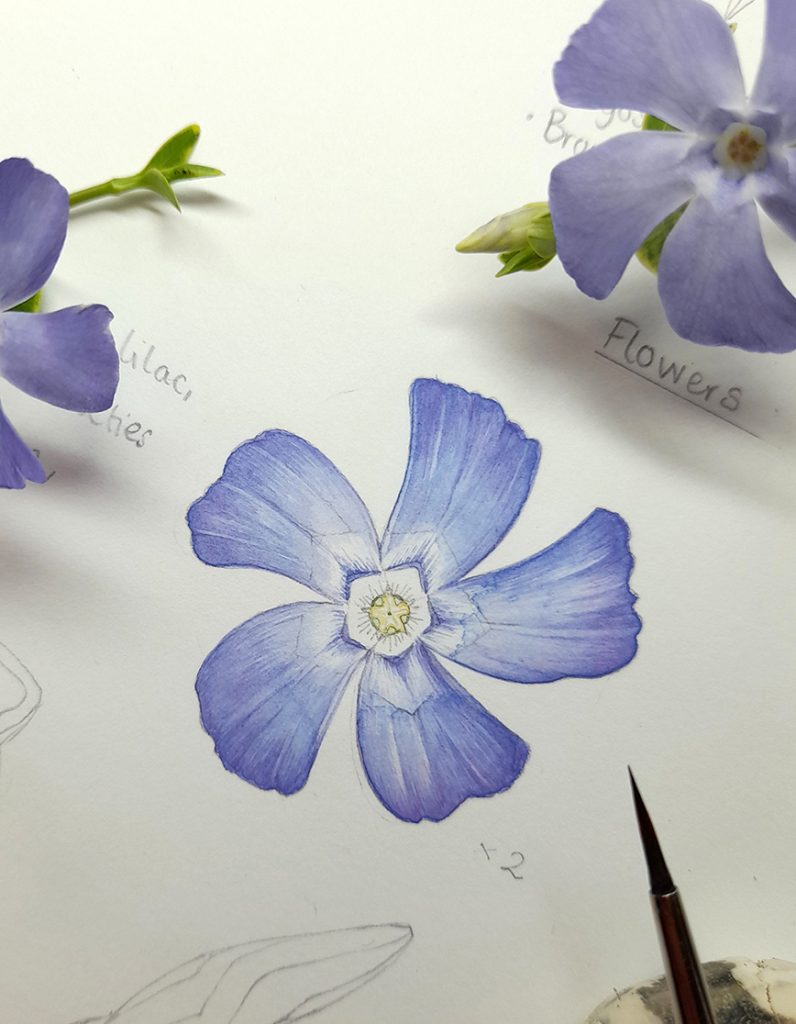
Lesser periwinkle flowers
There’s a difference in petal colour, too. V. minor flowers are a paler and pinker blue, sometimes almost a lilac hue. V. major flowers are a darker blue-purple.
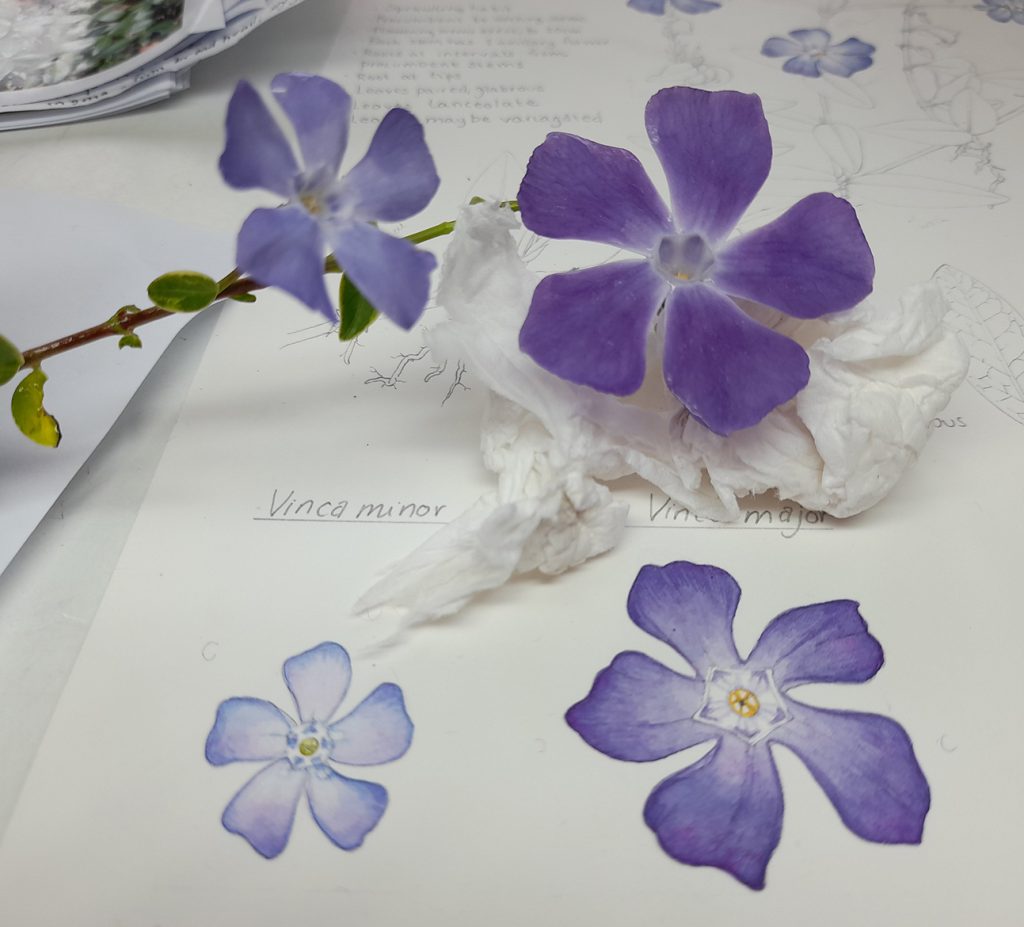
Lesser vs Greater periwinkle flowers
I was incredibly lucky to find both periwinkle species in flower as I illustrated them, it would have been hard to get the colours right without the flowers right there. The V. major flower was noticeably smaller than those blooming earlier in the summer, but as long as you’re aware of these seasonal differences you can compensate.
Obviously, it’s vital to keep specimens fresh as you draw them. I rather enjoy the classy tone the Babycham glass gave to proceedings…
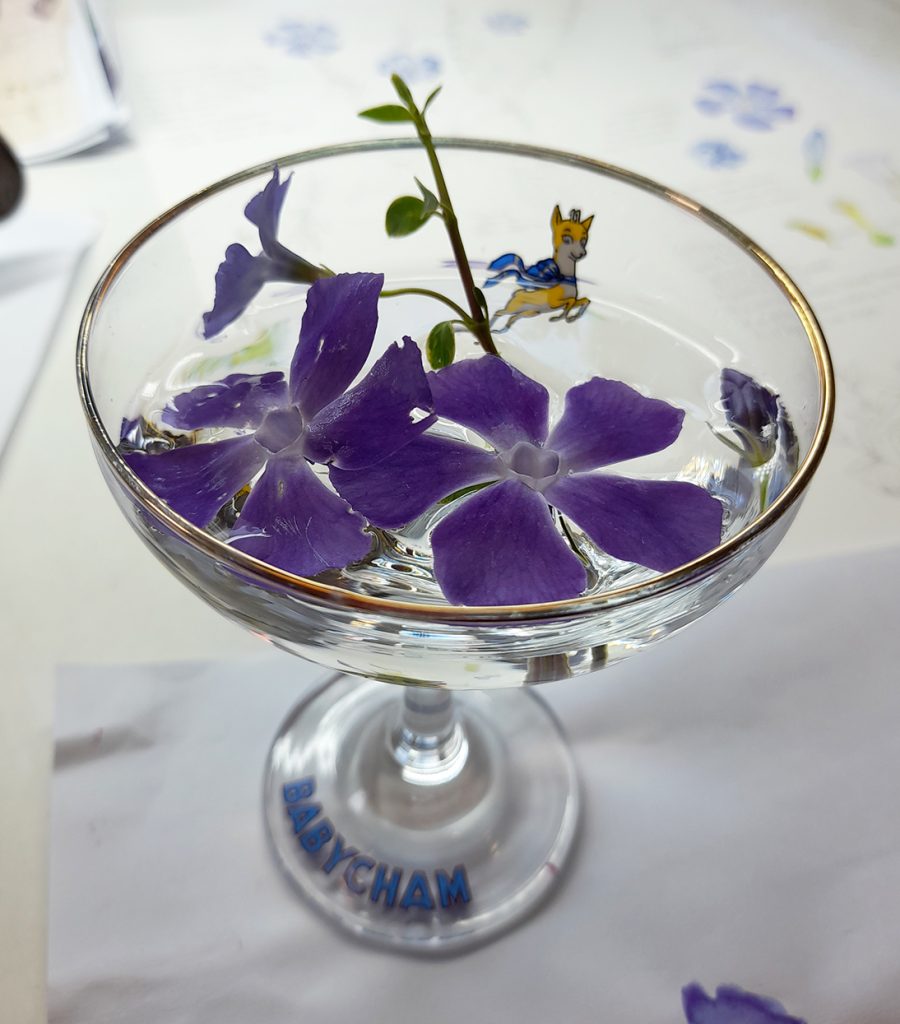
Classy reference
Calyx
The calyx is the outermost part of a flower, which is frequently green and often divided into sepals. In the periwinkles, it helps differentiate between the species.
V. minor has a smaller calyx (0.5cm long) which is hairless, and has blunt tips.
Calyx of V. major are twice the size, and have pointy tips. They are fringed with hairs which are absent in the Lesser periwinkle calyx.

Calyx of Lesser periwinkle vs Greater periwinkle
I’m not lying when I say spotting the differences in hair distribution, even under my dissecting microscope was a challenge. But then I only had one or two calyx from each species to examine. Looking for such distinctions is always easier when there’s a glut of fresh material to examine!
Conclusion
Before looking at these plants in detail, I didn’t even realise there were two species of periwinkle! It’s lucky that telling them apart was so straight-forward, and that I managed to get my hands of live reference before autumn closed in.
So if you want to know if that plant in your garden is Lesser or Greater; look our for leaf shape and stalk length, flower size and colour, and get that hand lens out on the calyxes.
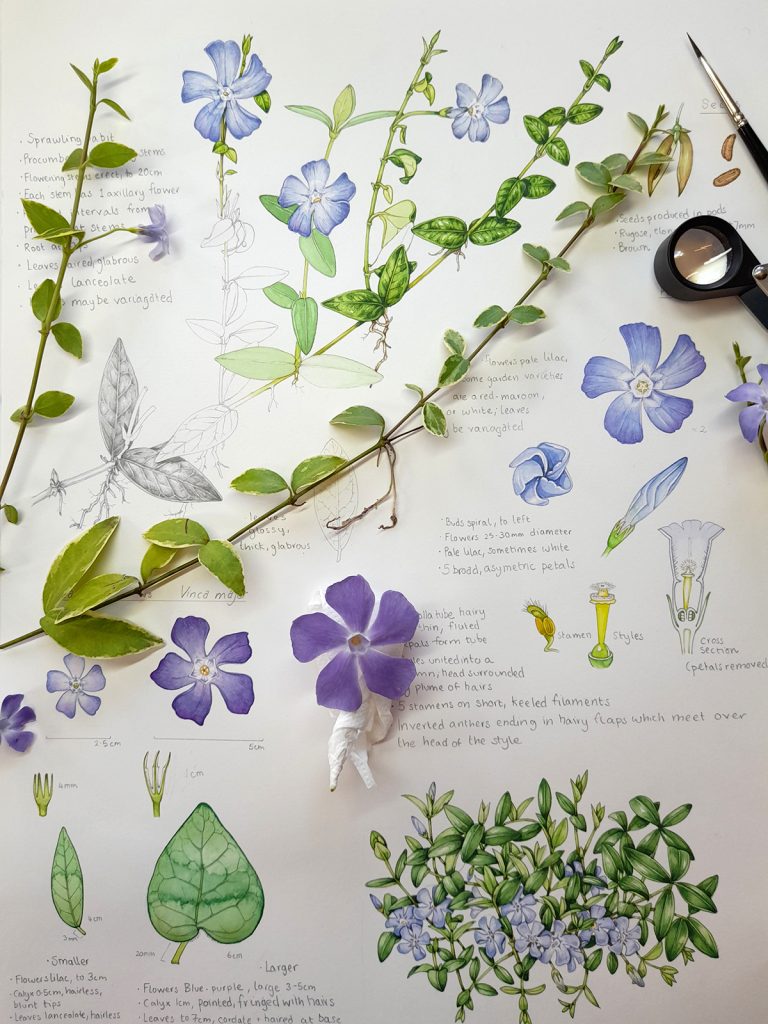
This unframed original illustration is available to buy for £125, if you’re interested do drop me a line on info@lizzieharper.co.uk.


That’s beautiful. Love your scientific and aesthetic approach.
Thanks so much, Karen!